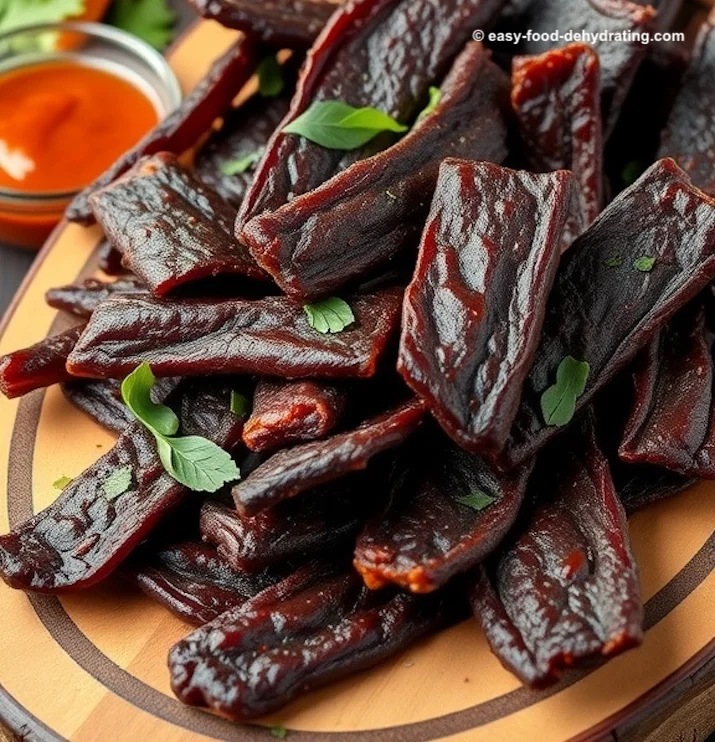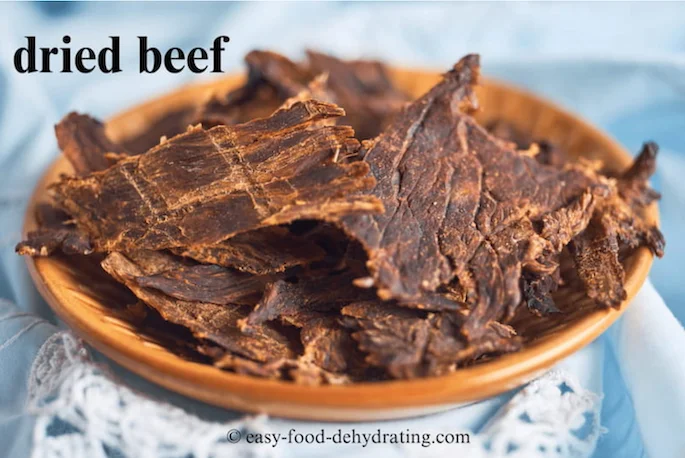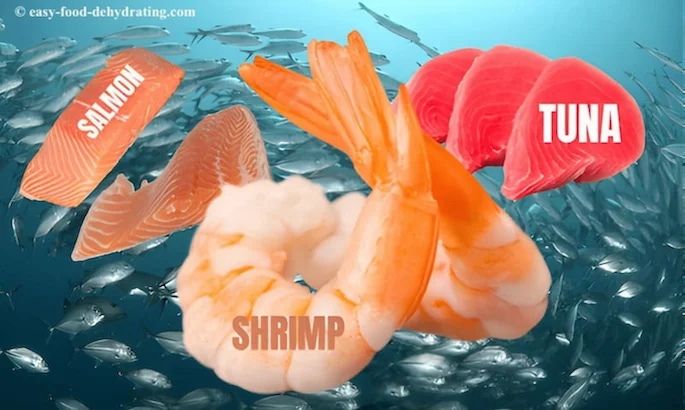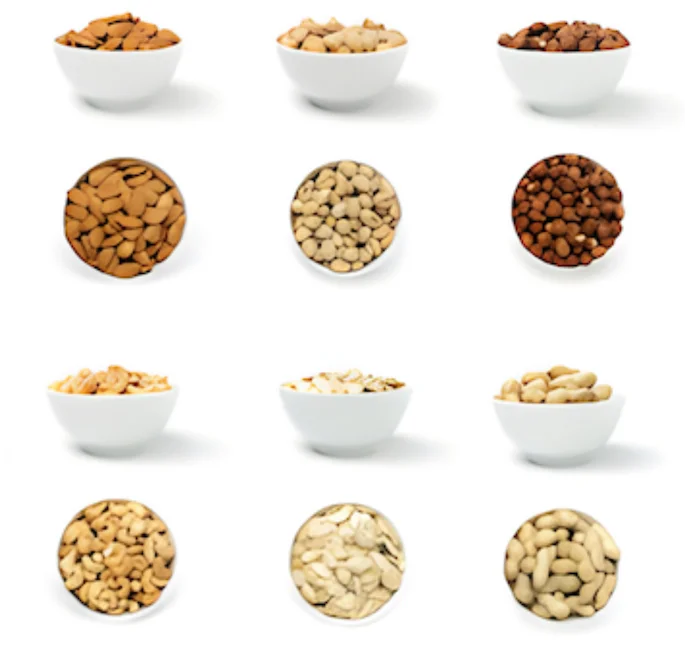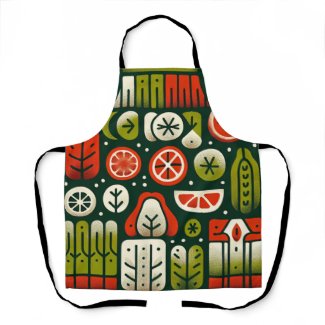Dehydrate Beef Like a Pro: Easy Steps for Perfectly Preserved Meat

Susan Gast | Author and blogger at Bored Boomers, Beesville Books, A New Sober You and Easy Food Dehydrating
I'm going to show you just how easy it is to dehydrate beef!
Here are some photos of sliced roast beef on the dehydrator trays before and after dehydrating. Look at how much the roast beef slices shrink!
Shrinkage is completely normal during the dehydration process for most foods.
Roast Beef BEFORE Dehydrating
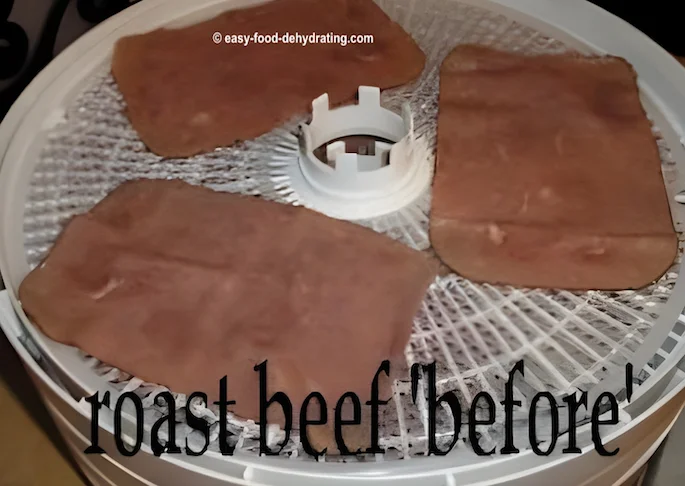 Roast Beef before dehydrating on a Nesco dehydrator tray
Roast Beef before dehydrating on a Nesco dehydrator trayRoast Beef AFTER Dehydrating
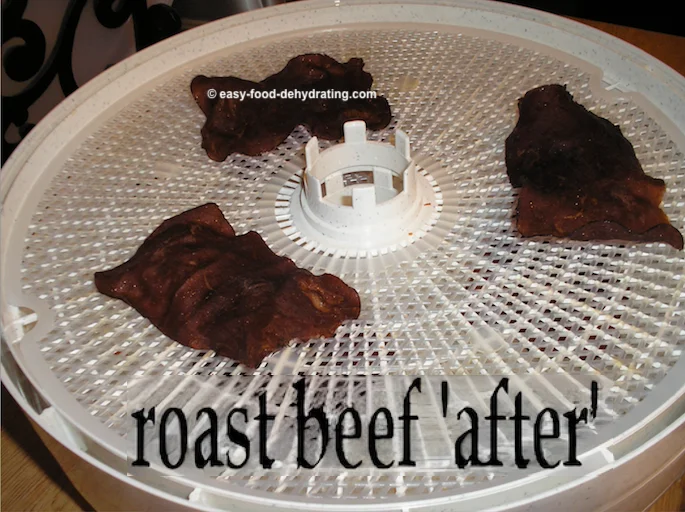 Roast Beef after dehydrating on a Nesco dehydrator tray
Roast Beef after dehydrating on a Nesco dehydrator trayFrequently Asked Questions
Do you cook meat before dehydrating for a Beef Jerky recipe?
Do you cook meat before dehydrating for a Beef Jerky recipe?
Yes! Always use cooked beef for dehydration. If you’re making jerky, you’ll need to add seasonings that act as a preservative. Check out our Spicy Beef Jerky Recipe page for more info.
Can you dry aged roast beef?
Can you dry aged roast beef?
No, there’s no need to dehydrate aged roast beef—it's already preserved. Instead, vacuum-seal it with an oxygen absorber inside the bag before drawing out the air.
Can you dehydrate beef liver?
Can you dehydrate beef liver?
Yes! Dehydrating beef liver preserves its nutrients and extends its shelf life.
How to Dehydrate Beef Liver:
- Slice thinly (about 1/8 inch thick). Partially freezing first makes slicing easier.
- Season (optional): Sprinkle with salt or spices like garlic powder.
- Arrange slices on dehydrator trays without overlapping.
- Dehydrate at 160°F for 6-12 hours, flipping halfway through.
- Liver is fully dehydrated when slices are firm and dry, yet pliable.
Storage:
- Airtight container in fridge: Up to 1 month
- Freezer: Up to 6 months
💡 Pro Tip: Dried beef liver is an excellent high-protein treat for dogs! Be sure it’s cooled completely before giving it to your pup. Check out our Dehydrated Liver for Dogs Guide for more info.
Can you dehydrate cooked meat?
Can you dehydrate cooked meat?
Yes! And that's the way I do it. Always dehydrate cooked meat, especially where pork is concerned. However, when making jerky, it's the seasonings that act as a preserver.
How long to dehydrate beef jerky at 160°F?
How long to dehydrate beef jerky at 160°F?
Please visit my Spicy Beef Jerky page for full info.
Why Dehydrating Beef is a Game-Changer
Let’s get started with dehydrating beef.
If you’re slicing leftover roast beef, try to cut evenly sized pieces—this ensures all slices dry at the same rate.
Shortcut: Pre-Sliced Roast Beef Saves Time
I skip the slicing by buying pre-cooked, pre-sliced roast beef—it saves time and effort!
Dehydrating Roast Beef with a Dehydrator (Best Method!)
- Arrange slices evenly on your dehydrator trays.
- Don't overlap slices—this ensures even drying.
- Set temperature to 160°F and dehydrate for 2 hours.
- Rotate trays halfway through for even drying (this isn't in the manual, but I do it anyway!).
- Test for doneness: The beef should feel crisp when fully dry.
- Storage: Place dried beef in vacuum-sealer bags with a 100cc oxygen absorber, then remove the air.
💡 Tip: Use our Fahrenheit to Celsius converter here on our site!
Oven Drying: An Alternative to a Dehydrator
- Preheat oven to the lowest setting.
- Place roast beef on a wire rack over a baking sheet.
- Keep the oven door slightly open (use a wooden spoon to prop it open).
- Check beef every few hours—it takes longer than using a dehydrator.
- Remove beef when fully dehydrated.
⚠ Important: We are dehydrating cooked roast beef—not raw beef!
💡 Pro Tip: Dehydrated beef, turkey, and chicken all rehydrate beautifully. I used 7 oz. of pre-cooked roast beef from Target, but Walmart and Publix brands work just as well.
Fun Fact: Do You Remember "Where’s The Beef?"

Think you know the answer? 🤔
Which fast-food chain made "Where’s the Beef?" famous?
Was it
a) McDonald's
b) Wendy's
c) Burger King
Answer: Scroll to the bottom!
Critical Safety Tip: Always Dehydrate at 160°F
never dehydrate meat at a lower temperature,
it's not safe (germ-wise).
Critical Safety Tip:
Always Dehydrate at 160°F
never dehydrate meat
at a lower temperature,
it's not safe (germ-wise).
💡 Tip: Use our Fahrenheit to Celsius converter here on our site!
The Perfect Temperature for Safe & Tasty Dried Beef
Cooked roast beef should be dehydrated at 160°F. Always check your dehydrator’s manual for manufacturer-specific instructions.
Dehydrating Meat for Jerky in Dehydrator
Here's an outstanding Spicy Beef Jerky recipe you and your whole family will love, along with rehydrating beef jerky for use in other recipes.
How to Rehydrate Dehydrated Beef (and Boost Its Flavor!)
How to Rehydrate Dried Beef:
🥩 Soak beef in water (or beef stock for extra flavor) for 30 minutes, or until soft enough to eat.
Flavor Hacks: Make Your Rehydrated Beef Taste Even Better
- Add soy sauce, BBQ sauce, or Better Than Bouillon stock to the water for extra taste!
- Rehydrated beef is perfect for soups, stews, and casseroles.
⚠ IMPORTANT: Always rehydrate in the refrigerator to prevent spoilage—never leave it on the countertop, especially in hot climates.

Shown above is a slice of roast beef held by its corner, to show you how stiff the roast beef was after dehydrating.
I then took another photo, just an hour later, of the same piece of beef to show you how limp it was after rehydrating!



A Funny Family Cooking Story (With a Lesson!)
Years ago, a young girl wanted to learn how to cook beef. She watched her mom prepare it, noticing something odd—her mom cut off the end of the beef before roasting it.
"Mom, why do you cut off the end?" she asked.
Her mom shrugged. "That’s how Grandma does it!"
Curious, she called her grandmother. "Nana, why do you always cut off the end of the beef before roasting it?"
Grandma laughed and said, "Sweetie, I only do that because my roasting pan is too small!"
😂 Moral of the Story:
Sometimes we follow traditions blindly—but when it comes to beef, less is more!
The Answer to the
"Where's the Beef?"
question is:
b) Wendy's, in 1984!
(Read more on Wikipedia)
🎉 Enjoy dehydrating your beef—now get at it! 🎉
Grab Your Free Dehydrating Guide – Master the Basics!
Don't forget to grab your free Six Simple Steps eBook! It’s packed with tips for dehydrating everything from fruits and veggies to dog treats. Get it here.
Before You Go...
If you like the content, please give me some love by clicking on the 🩷 in the lower right hand corner (on just about all my pages). This signals to me that you find it enjoyable and useful. Thank you so much!
